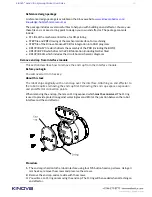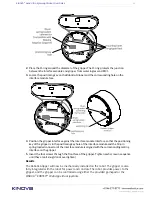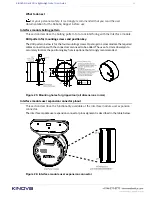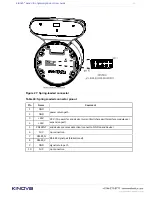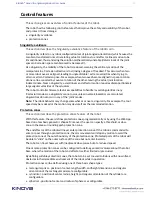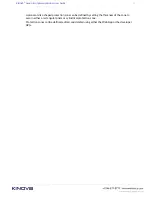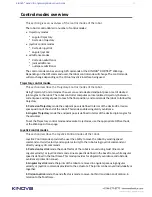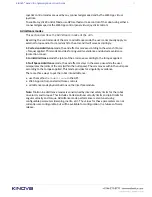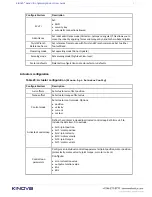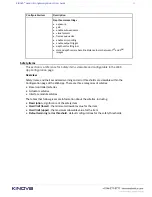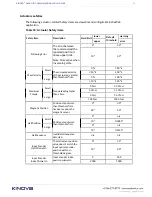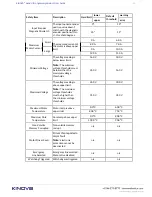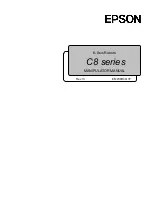
KINOVA
®
Gen3 Ultra lightweight robot
User Guide
71
Terminology reference
The following sections give an overview of the terminology of the robotic arm.
For ease of reference, the terminology reference section has been divided into the following
categories:
• Acronyms
• General mathematics and robotics
• Features, components and functionalities
• Control and Operation Modes
General mathematics and robotics
Axis
A fixed line for the measurement of coordinates or angles, in relation to which is specified
the robot motion (in linear or rotational fashion).
Base Frame
The reference frame located at the center of the bottom surface of the arm's base. This
serves as the origin frame in Cartesian space.
Cartesian Space
The Euclidean space described by x, y and z of the Cartesian coordinate system.
Center of Mass
The center of mass is a useful reference point for calculations in mechanics that involve
masses distributed in space.
Closed Loop control system
Control system of a robot manipulator by means of sensor feedback. As a manipulator
is in action, its sensors continually feed information back to the robot's controller which
is used to further guide the manipulator within the given task. Many sensors are used to
provide information about manipulator placement, speed, torque and applied forces, as
well as the location of a targeted moving object, etc.
Coordinate System
A system used to represent a position in three-dimensional space, consisting of three
coordinate axes and an origin.
Degrees of Freedom (DoF)
The number of independent directions or joints of the robot, which would allow the
robot to move its end effector through the required sequence of motions. For arbitrary
positioning, six degrees of freedom are needed: three for position (x, y, z) and three for
orientation (yaw, pitch and roll).
Endpoint
The nominal commanded position that a manipulator will seek at the end of a motion
path.
Euler Angle
• Describes the orientation of a rigid body with respect to a fixed coordinate system.
• Another less complicated way to express vector orientation.




